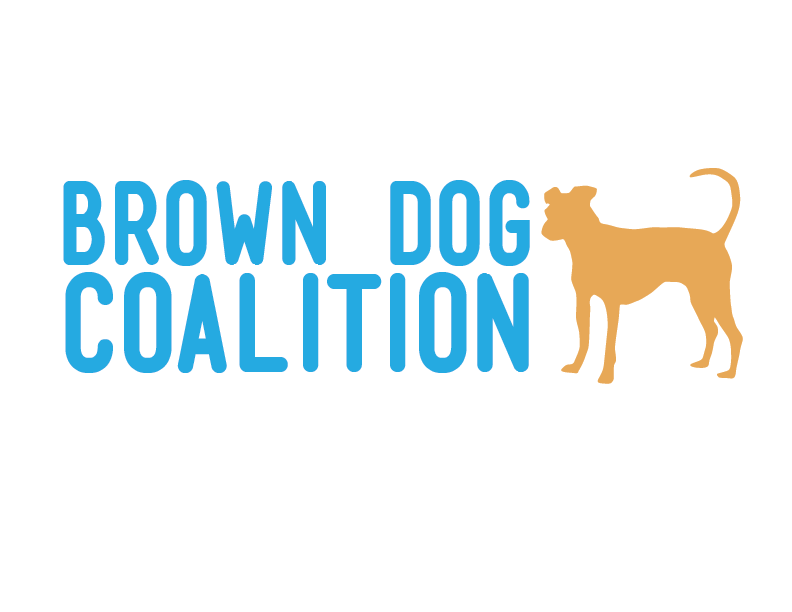When Will My Dog Know They Are Home?
“It takes 3 days for a dog to decompress, 3 weeks for them to learn a routine, 3 months for them to feel at home.” But how accurate is the rule of three’s?
It’s more of a guideline than a rule. Dogs will settle in on a timeline that feels safe to them. Remember, every dog is different and has had different life experiences. Also, keep in mind that dogs respond differently to different environments, people, and routines. It takes time for everyone to adjust to each other.
So, while the rule of three’s isn’t objectively true for every dog, it carries a great message that dogs don’t settle in overnight.
Brown Dog checks in with our adopters after three days, 3 weeks, and 3 months of adoption, so we can gauge progress. Some dogs go home, and they are quickly confident in their new digs, whereas other dogs take more time to acclimate. Checking in at intervals helps our rescue understand how a dog is doing over the first months of their individual adoption journey.
Learn how you can help your dog understand that they’ve been adopted, you are their family, and that this is their forever home below!
A few things that help your dog settle in:
Avoid stress: Forgo high risk situations where a dog can escape, get frustrated, overwhelmed, or nervous (think: the dog park, pet supplies store, and family gatherings).
Establish a routine: Predictability builds resiliency. Consistent feeding, walking, and sleeping times will help your dog adjust to their new schedule.
Decompression walks: Walk your dog in a quiet neighborhood or walking trail during a low-traffic time of day (early morning) and gradually work up to busier routes like state parks or higher-traffic areas. We recommend decompression walks with a 30' leash.
Enrichment toys: Encourage dogs to engage in normal dog behaviors like sniffing and shredding with enrichment toys. Check out our blog post for enrichment ideas.
Bonding and trust-building activities:
Training games: We’re not talking about teaching “sit,” “down,” “stay.” Focus on creating positive associations, keep it fun, and if your dog opts out of the session (walks away), then end it. Rewarding four paws on the floor, teaching a “touch” cue, and recall games are fun and easy training activities to do with a new dog.
Meet their needs: Look for cues that they are hungry, have to go out, want attention, or need an enriching activity to do. Barking, pacing, pawing, and whining may be signals that your dog needs something, and as their best advocate, it’s up to you to help them!
Learn about body language and stress signals: Body language is a form of nonverbal communication that dogs are fluent in and we, as their caretakers, need to learn. Whole Dog Journal, RSPCA, and Kikopup are great starting points for learning more.
Signs your dog feels safe, is gaining confidence, and is settling in:
Relaxed body language: Learning about body language makes it easier to identify when your dog is calm, relaxed, or happy. Loose body, a neutral wagging tail, and a relaxed face are all signs that your dog feels safe.
Soliciting affection: Eileen Anderson wrote an article that explains if a dog really wants to be petted. Some dogs are exuberantly cuddly, others need time to warm up, and some are only ever occasional snugglers. When a new dog solicits affection it’s a great indication that they feel safe.
Eye contact: Eye contact can be trained or it can happen unintentionally when your dog associates eye contact with positive reinforcement (like receiving treats or responding to their needs).
Expressing new or exploratory behaviors: Spice is nice! Behaviors like barking, zooming around, or jumping up on furniture are all normal behaviors and indications that your dog feels safe and at home. This quote from an adopter of a fearful Brown Dog is the perfect response to seeing her dog’s new-found confidence:
Note: your dog is not “testing boundaries” by getting on the furniture, surfing the kitchen counter, or chewing on slippers. When dogs express exploratory behavior, they are gathering information, gaining confidence, and problem solving. If your dog is expressing a new and unwanted behavior, it is time to teach an alternative behavior, manage the environment, provide more enrichment, and/or employ the help of a certified trainer.
In summary…
Three days, three weeks, and three months are general milestones that fit into a convenient formula. But dogs will take as long as they need to decompress, learn a routine, and settle in. We've found that dogs often need longer than a few days to decompress, particularly if they’ve just been transported and quarantined (out of state rescue). The original Brown Dog, Libby, didn’t even bark for six months after she was adopted!
Remember progress isn’t linear: especially if you have adopted a fearful dog. The goal isn’t to meet a benchmark for progress every day, but rather to see small and significant wins over time!
Every dog is unique and will adjust at their own pace—give them the time, space, and positive reinforcement to feel safe.
“
Dogs don’t settle in overnight. Every dog is unique and will adjust at their own pace. Give them the time, space, and positive reinforcement to feel safe.



